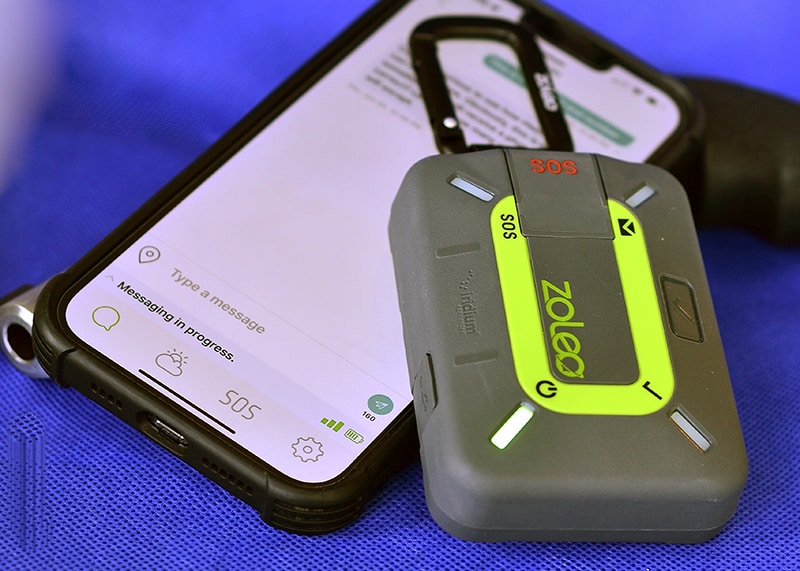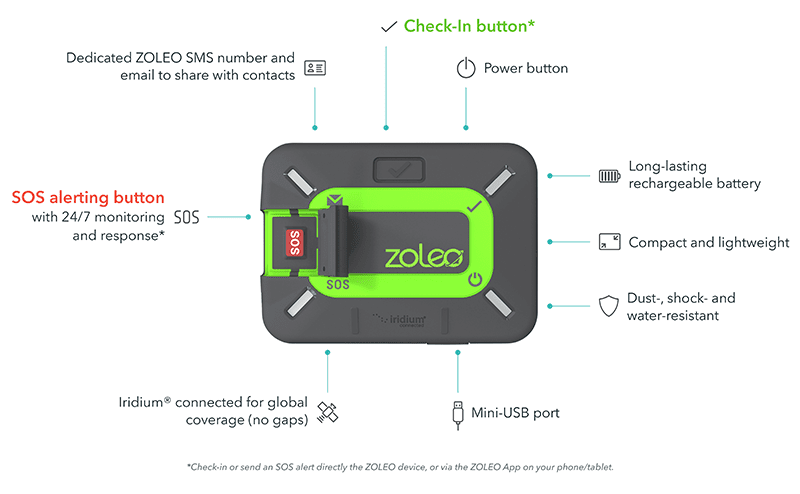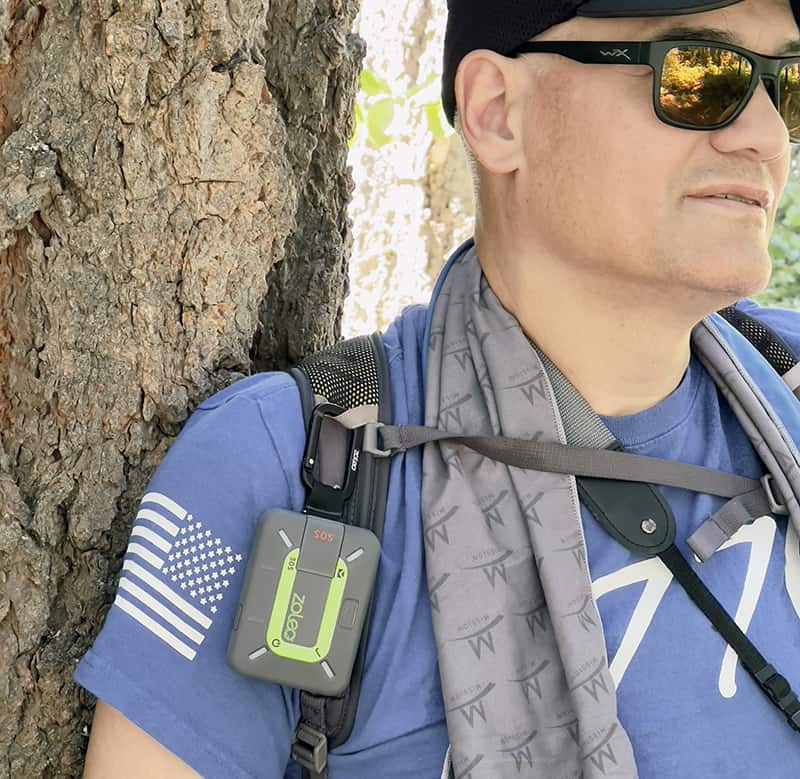ZOLEO Satellite Communicator
Stay In Contact Everywhere
Simplicity And Utility Defined
If I have not mentioned it before, I have the best job in the world. I recently tested ZOLEO’s satellite communicator, a product that allows the user to send and receive emails and texts anywhere in the world. My wife saw right through this review and called me out on it. In order to test the ZOLEO functionality, I had to go fly-fishing.
The ZOLEO messaging system consists of the ZOLEO device, a rugged satellite transceiver smaller than my smallest fly box, and an app that connects it to your cell phone. This is probably the best feature. It uses a familiar and non-technical interface: An app on your cell phone. The app does something completely different than most other satellite communication devices, and its simplicity and utility will make it indispensable to sportsmen.
By default, the ZOLEO messaging system picks the cheapest route to send a message. That is, if Wi-Fi or 5G is available, it will use this first. It resorts to SBD (Short Burst Data) only if the cell phone is “out of range.”
ZOLEO uses the Iridium satellite constellation, a system of 66 overlapping, redundant, low earth orbiting (LEO) satellites capable of worldwide coverage. Combined with the ZOLEO interface, it is a unique consumer-based SBD messaging system, and my tests demonstrated it is intuitive and seamless.
ZOLEO gives the subscriber a dedicated SMS number and email address for messaging. This has a couple advantages over other systems. First, some systems require the person with the device message the recipient before the two-way conversation over SBD systems take place. With the ZOLEO dedicated number, contacts can simply text or email the ZOLEO user.
The first time I charged my ZOLEO using the included USB cord, I left it on. Because I was monitoring battery life, I put the thing on the floor next to my bed. Big mistake. The LED, which is purposely bright enough to find and rescue a victim, was also capable of keeping me up at night. I found I could use the app to dim the LED. The app also tracks the battery status of the device, which, after 36 hours of continuous connection, still had a 60% charge.
Using Bluetooth on your cell phone in the wilderness will add from 1–4% drain on its battery. I recommend you switch to “airplane mode” when the phone is outside of reception range. This will allow the Bluetooth connection between the ZOLEO unit and the phone, without having the phone use power searching for cell towers. Using airplane mode keeps my phone going for days.
User-Defined Location Notifications
The ZOLEO has user-defined location notifications, which transmits location information to your inner circle via SMS and/or email. The notification interval can go from “always on” to 60-minute intervals. It can also be configured manually. Your message recipient receives an accurate location that opens in the device’s default mapping app.
Standard messaging has a character limit. When sending with the connected ZOLEO app, it will automatically quit typing characters when the user meets the message limit. If the message goes from one ZOLEO app to another, the message size is much larger. The advantage of using this system is enormous if the users are hunters or overland travelers communicating rendezvous points. I, however, do not share where the fish are biting, or even what flies are working for that matter. I would share with others if my waders decide to go swimming and I’m still in them.
The ZOLEO device is IP68, and it can handle a swim and heavy-duty abuse. Since it is a satellite device, keeping it uncovered and unrestricted is advantageous, so the case has to be able to take a beating. As an end user, your primary concern should be your cell phone, which is generally not as rugged.
The good news is the ZOLEO device can operate as a stand-alone communicator. If the phone goes down, there is a recessed button for check-ins, and a covered button for an SOS.
The app comes with an integrated weather app. Getting a 4-day weather report on an app when there is no Wi-Fi is a bonus.
Before even setting up the ZOLEO device, you are prompted to enter two SOS contacts. These contacts are notified right away through the GEOS system, if the SOS is activated. GEOS, and the connected IERCC (International Emergency Response Coordination Center) is sort of a 911 for satellite users. They coordinate rescues around the world and are staffed 24/7. This is the important feature of ZOLEO, and the reason why I pick this product over the satellite devices I have previously used. The ZOLEO features, which come with every subscription, keep the SOS contacts and the person being rescued in the loop, all the way through the rescue process.
For those who wish to test the SOS before wandering, you can fill out a form and make previous arrangements with the IERCC. With the ZOLEO, I never found this was necessary, as I can always text my friends and ask, “How copy, over?”
In the settings, you can connect the app with contacts just in case you wish to surprise your friend with, “I’m hiking through the jungles in Borneo. Would you like to meet for coffee?”
It took me a few attempts to send my location in a message. Had I read the tutorials, I would have realized all I needed to do was click the map location icon in the message dialogue box. It sends a LAT/LON message to the recipient. On the other end, the linked message asks which mapping app should be used to open the message, i.e. Apple Maps or Google Maps.
ZOLEO Is A Game Changer
Satellite messaging has become quite reliable, and two-way messaging in the ZOLEO is a game changer. I sent and received several messages from densely wooded areas, and others from clearings. Some messages took a few minutes to send. One time, inside of a dense grove of trees, the message, and the response from the other end, was less than two minutes.
The ZOLEO Satellite Communicator has an MSRP of $199 and plans start at $20 per month. You should know they have a month-to-month service suspension, so users can keep it going only during peak camping, hunting or cross-country skiing season.
When I talked to Julia Fesenko of ZOLEO, she told me the emphasis of ZOLEO is to provide a service where the goal is reliable communication. This differs from competitive services that are primarily location devices. What I found was ZOLEO responded to the end user better than the other services I’ve used, for less money, in a more user-friendly manner. Succinctly, I just canceled my other service and mothballed the unit. I’m on Team ZOLEO now.
For more info: www.zoleo.com

Get More Carry Options content!
Sign up for the newsletter here:





